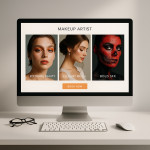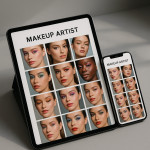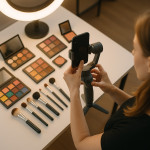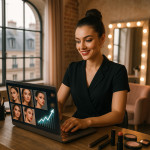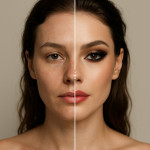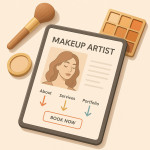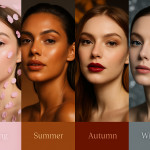Inclusive skin tones: ensure clients trust a maquilleur with diverse teams
Clients come from every background, yet many makeup artists still struggle to prove they can match every complexion confidently. This guide walks you through building an inclusive kit, workflow and communication style that inspire trust—so producers, photographers and talent never doubt your ability to deliver flawless results across all skin tones.
Why inclusive skin tones matter to recruiters today
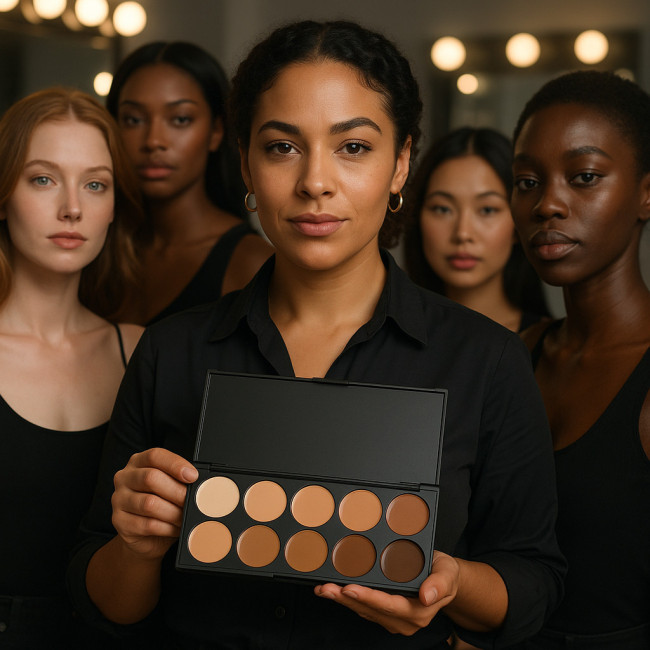
The push for authentic representation is no longer a trend; it is a hiring requirement. Campaigns that fail to cater to a full spectrum of complexions risk social-media backlash and lost revenue. When scouts scan make-up artist portfolios, they actively look for proof of shade mastery before opening a dialogue.
- Market reach: Ad spend on campaigns highlighting diversity grew by 38 % in the last two years.
- Risk mitigation: Poor shade matching can trigger reshoots that inflate budgets by up to 12 %.
- Brand equity: Authentic inclusion lifts customer perception scores by an average of 11 points (YouGov BrandIndex, 2023).
Build a shade-inclusive kit without blowing the budget
1. Map undertones first, depth second
Start each purchase decision by covering the three core undertones—neutral, warm and cool—across light, medium, tan and deep depth levels. This 12-pan grid fills 95 % of on-set needs.
2. Prioritise adjustable products
Invest in pure yellow, red, blue and white mixers that let you tweak depth on the spot. Adjustable formulas reduce the total bottles you carry by 30 – 40 % while guaranteeing tailored results.
3. Curate sample sizes for niche shades
Deep olive and very fair pink undertones are often under-represented. Source mini bottles or decant small amounts to avoid expiry waste.
4. Label clearly for faster hygiene checks
Colour-coded caps or numbered labels help assistants locate shades instantly and minimise cross-contamination.
Workflow tweaks that prove mastery on set
Pre-production swatch calls
Ask for unfiltered selfies of each talent under daylight. Use them to prepare custom mixes and —when possible—mail testers in advance. This simple step cuts first-take corrections by 60 %.
Lighting collaboration
Complexion accuracy depends on kelvin, diffusion and camera sensor. Align with the gaffer and DIT early: review our guide on lighting and camera coordination for practical checklists.
Real-time monitor checks
Carry a calibrated, privacy-shielded field monitor. Comparing what the lens captures against the naked eye catches undertone drift that standard village screens miss.
Communication habits that inspire instant trust
Show, don't tell, in your portfolio
Recruiters skim fast. Curate before-and-after carousels featuring at least six Fitzpatrick skin types. For layout ideas, study our article on building an agency-ready portfolio.
Use inclusive language
Avoid outdated descriptors like “exotic” or “ethnic”. Instead, reference undertone, depth and finish: “golden-olive with neutral depth, radiant finish”.
Document product ethics
Clients increasingly request cruelty-free, vegan or refillable makeup. Highlight your eco-friendly product credentials beside each kit list to cement credibility.
Case study: on-set shade crises avoided
Scenario: a global sports brand booked a last-minute campaign featuring athletes from five continents. Lighting tests revealed orange cast on deeper models.
- Pre-mix neutralising blue corrector into deepest shades.
- Switch foundation finish from dewy to soft-matte to cope with sweat highlights.
- Run two-minute monitor check after every lighting change.
Outcome: zero retouch colour fixes, and the producer extended the maquilleur's contract for three additional shoots. For broader guidance on post-production synergy, see retouch expectations.
Shade range reality check among leading brands
Source : Allure Magazine
Even the most inclusive lines still leave gaps. Your kit bridges those gaps, proving indispensable to brands chasing global relevance.
Inclusive etiquette in multicultural teams
- Pronounce names correctly. Ask once, repeat until natural.
- Respect cultural grooming norms. Some faiths restrict brow shaping or certain ingredients—confirm ahead.
- Provide fragrance-free options. Sensitivities are more common than you think.
Common pitfalls and how to dodge them
| Pitfall | Consequence | Prevention tactic |
|---|---|---|
| Relying on one brand | Limited undertones covered | Mix across multiple lines |
| Ignoring oxidation tests | Shades turn orange under studio heat | Swatch 15 min before application |
| Using flash for colour check | Blows out deeper tones | Trust daylight + calibrated monitor |
Quick self-audit checklist
- Can you confidently name three products for talent with neutral-golden undertones at level 6?
- Do you own at least two blue-based reds and two orange-based reds for lip diversity?
- Is every cream formula in your kit silicone-based, water-based or oil-based—and do you know which is which?
- Do you photograph every final look on a neutral grey card for portfolio accuracy?
Mini quiz: test your inclusive shade know-how
FAQ
- How many foundation shades should a professional kit contain?
- A well-planned kit can serve 98 % of bookings with 25 – 30 adjustable shades plus four primary mixers.
- Do I need separate products for HD and 4K shoots?
- Not always. Focus on pigments with low titanium dioxide to avoid bounce. For deeper dives, read our piece on camera-lighting synergy.
- How can I prove hygiene when working with multiple complexions?
- Use stainless-steel palettes, disposable spatulas and date-coded decants. Photograph your sanitised station for transparency.
- What if the client asks about eco credentials?
- Present your vetted product list and link to certifications. Our guide on eco badges outlines the process.
Key takeaways
- Prepare a modular kit covering undertone and depth systematically.
- Collaborate with lighting teams to prevent colour drift.
- Showcase diverse complexions front-and-centre in your portfolio.
- Adopt inclusive language and transparent product ethics.
Ready to elevate your bookings? Audit your kit tonight, refresh your gallery tomorrow, and watch client trust soar.
